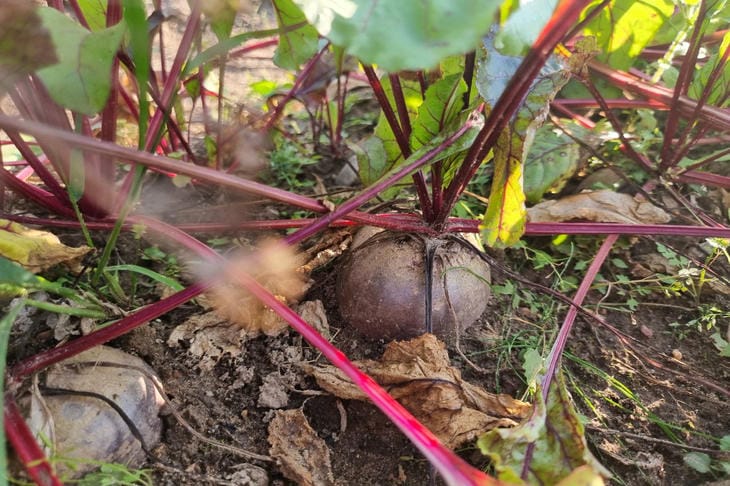How to Know When It's Time to Harvest Beets: Secrets to a Perfect Harvest of Ruby Root Vegetables
Beetroot is a real treasure of the garden, rich in vitamins and minerals.
However, to get the maximum benefit and taste, it is important not to miss the moment of harvesting.
Determining the optimal time to harvest beets is a key skill for every gardener.
Signs of beet ripening
Experienced gardeners know that beets give clear signals that they are ready to be harvested. The first and most noticeable sign is a change in the color of the leaves.
When the tops begin to turn yellow and wither, this is a sure sign that the root crops have reached maturity.

Size of root vegetables
The size of the beet is another important indicator. The optimal diameter of a mature root crop is 8-10 cm.
Beets of this size have the best taste and maximum nutritional content. Larger specimens may become tough and less sweet.
Planting and vegetation periods
The harvest time largely depends on the planting dates and the length of the growing season of a particular variety.
Most beet varieties ripen 90-110 days after sowing. Taking these dates into account will help you roughly determine the harvest time.
Checking root vegetables
To accurately determine whether beets are ready for harvesting, a spot check can be carried out.
After carefully digging up a few root vegetables, you should assess their size and color. Mature beets have a rich dark burgundy color without light veins.
Soil condition and weather conditions
It is important to consider the soil condition and weather forecast. It is better to harvest beets in dry weather, when the soil is not too wet.
This will make harvesting and storing the crop easier. Also, don't delay harvesting if frosts are expected.
Features of different varieties
Different varieties of beets may have their own ripening characteristics. Early varieties are usually ready for harvesting in midsummer, while late varieties are harvested closer to autumn.
Studying the characteristics of the variety being grown will help you more accurately determine the harvest time.
Storage of harvested crops
After determining the readiness of the beets for harvesting, it is important to collect them correctly and prepare them for storage. The root crops are carefully dug out, trying not to damage them.
The tops are cut off, leaving a small tail. The beets are dried and stored in a cool place.
Using unripe beets
If part of the harvest has not yet fully ripened, it can also be used. Young beets are great for making salads and beet tops.
It is more tender and sweet, although it is not suitable for long-term storage.
Preparing for the next season
After harvesting, it is important to prepare the soil for the next season. The area where the beets grew is cleared of plant debris and fertilized if necessary. This will help ensure a good harvest next year.
